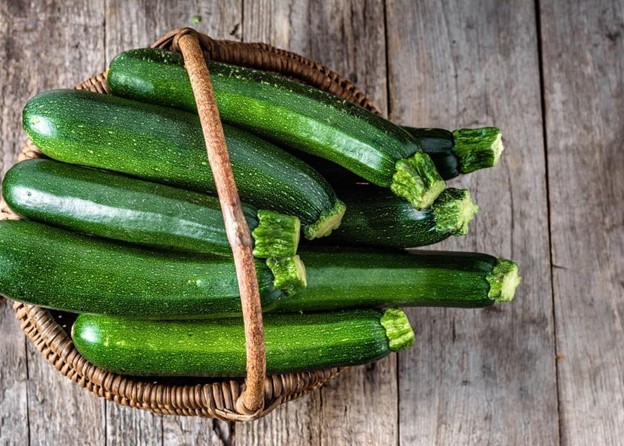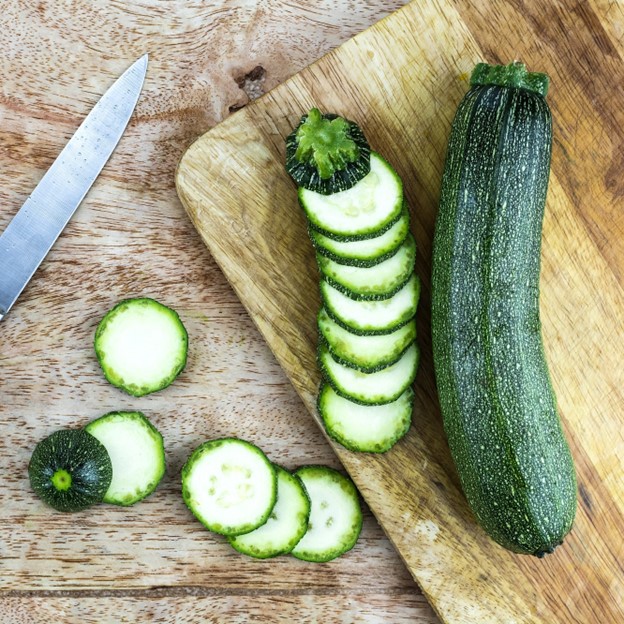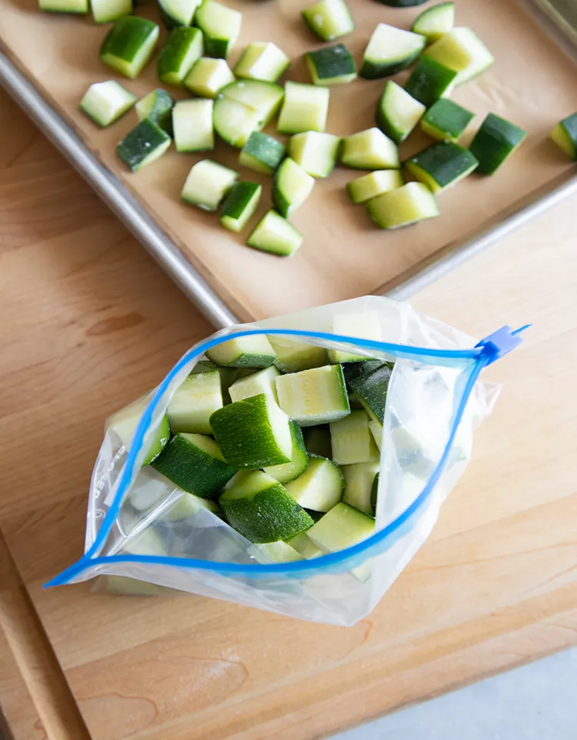A Few Ways to Better Cope with Summer’s Notorious Vegetable
Before we know it, the neighbors are going to come bearing “gifts”—their bumper crop of zucchini, to be exact. I know this because I’m one of those neighbors. It’s always a love-hate relationship with this vegetable.

ANYway, whether you’re giving, or receiving, it’s good to know how to properly store the stuff. And who better to guide us in this crucial pursuit than the Queen of All things Home and Garden, but Martha Stewart herself!
She says, “Unlike its winter counterparts (such as butternut squash and pumpkin), zucchini has a thinner skin, making it more perishable. To get the most out of your summer squash, it's worth learning how to properly store zucchini, whether whole, cut, or cooked.”
From food scientists, food safety experts, expert chefs, and cooking teachers, she gathered the best practices on how to extend the shelf life of this popular vegetable. Here’s the latest research:

First, whole zucchini. Uncut zucchini should be stored in a loosely closed plastic bag in the crisper drawer of the refrigerator. The plastic bag will keep the zucchini fresh by preventing moisture loss, meanwhile, the crisper drawer will stop excess moisture from accumulating on the zucchini, which would otherwise promote spoilage.
I’ve found storing it in a plastic bag also minimizes the chances of it getting nicked by anything else around it. Once its skin is punctured, spoilage accelerates. When stored properly, refrigerated whole zucchini will last for one to two weeks.
If you've already cut raw zucchini, you can still keep it fresh for up to five days in the fridge. Line a container (one with an air tight lid) with a dry paper towel. This will help absorb excess moisture. Place the cut zucchini in the container and secure the lid. Store the container in the crisper drawer of the refrigerator.

Now, about freezing it: if its texture is a priority in your dish (salads, “zoodles” or for a fresh veggie platter, for instance), you'll want to avoid freezing it. But where the texture isn't important, such as in soups, stews, or purees, then freezing it is just fine. Follow these steps for the best outcome (and be sure to use your frozen zucchini within three to four months):

Lastly, there are a couple things you can do to make it last longer (besides buying the freshest of the fresh). First, don’t wash it prior to storing. ANY moisture present on the zucchini's surface during storage will promote the mold growth. And second, store it far away from ethylene-releasing produce (apples, melons, kiwis, or onions, for instance).

Now that you know how to increase its storage time and better cope with this notorious vegetable, maybe you won’t be so inclined to lock the door and close the blinds when you see me coming with my “gifts.” (Or not.)

ANYway, whether you’re giving, or receiving, it’s good to know how to properly store the stuff. And who better to guide us in this crucial pursuit than the Queen of All things Home and Garden, but Martha Stewart herself!
She says, “Unlike its winter counterparts (such as butternut squash and pumpkin), zucchini has a thinner skin, making it more perishable. To get the most out of your summer squash, it's worth learning how to properly store zucchini, whether whole, cut, or cooked.”
From food scientists, food safety experts, expert chefs, and cooking teachers, she gathered the best practices on how to extend the shelf life of this popular vegetable. Here’s the latest research:

First, whole zucchini. Uncut zucchini should be stored in a loosely closed plastic bag in the crisper drawer of the refrigerator. The plastic bag will keep the zucchini fresh by preventing moisture loss, meanwhile, the crisper drawer will stop excess moisture from accumulating on the zucchini, which would otherwise promote spoilage.
I’ve found storing it in a plastic bag also minimizes the chances of it getting nicked by anything else around it. Once its skin is punctured, spoilage accelerates. When stored properly, refrigerated whole zucchini will last for one to two weeks.
If you've already cut raw zucchini, you can still keep it fresh for up to five days in the fridge. Line a container (one with an air tight lid) with a dry paper towel. This will help absorb excess moisture. Place the cut zucchini in the container and secure the lid. Store the container in the crisper drawer of the refrigerator.

Now, about freezing it: if its texture is a priority in your dish (salads, “zoodles” or for a fresh veggie platter, for instance), you'll want to avoid freezing it. But where the texture isn't important, such as in soups, stews, or purees, then freezing it is just fine. Follow these steps for the best outcome (and be sure to use your frozen zucchini within three to four months):
- Prepare an ice-water bath in a bowl. Line a baking sheet with parchment paper.
- Cut fresh zucchini into cubes or slices.
- Bring a pot of water to a boil.
- Add the zucchini and blanch for 3 minutes.
- Using a slotted spoon, transfer the zucchini to the ice water bath.
- Remove the zucchini with the slotted spoon and place it on the baking sheet in a single layer.
- Gently pat the zucchini dry with a paper towel. Transfer the baking sheet to the freezer for 1 or 2 hours.
- Once the zucchini pieces are frozen, transfer them to a freezer-safe silicone or plastic bag, removing as much air as possible.
- Place the bag in the freezer.

Lastly, there are a couple things you can do to make it last longer (besides buying the freshest of the fresh). First, don’t wash it prior to storing. ANY moisture present on the zucchini's surface during storage will promote the mold growth. And second, store it far away from ethylene-releasing produce (apples, melons, kiwis, or onions, for instance).

Now that you know how to increase its storage time and better cope with this notorious vegetable, maybe you won’t be so inclined to lock the door and close the blinds when you see me coming with my “gifts.” (Or not.)
 Alice Osborne
Alice Osborne
Weekly Newsletter Contributor since 2006
Email the author! alice@dvo.com
